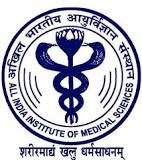预约演示
更新于:2025-05-07
Ocimum extract
罗勒提取物
更新于:2025-05-07
概要
基本信息
在研机构- |
权益机构- |
最高研发阶段无进展临床2期 |
首次获批日期- |
最高研发阶段(中国)- |
特殊审评- |
登录后查看时间轴
关联
9
项与 罗勒提取物 相关的临床试验CTRI/2025/04/084876
An open label comparative clinical study to evaluate the enhanced effect of Guided imagery meditation with Tulsi (Ocimum sanctum Linn) capsule on professional students in Chittodvega w.s.r to Adjustment disorder - GIM
开始日期2025-05-05 |
申办/合作机构- |
CTRI/2024/11/076894
A double-blind, randomized, placebo-controlled trial assessing Ocimum sanctum extract as adjuvant therapy in persons with drug-resistant epilepsy - NIL
开始日期2024-11-25 |
申办/合作机构- |
CTRI/2024/08/071916
Evaluation Of Locally Delivered Electrospun Ocimum Sanctum-l and Curcumin Nanofiber for the Management Of Periodontal Disease- A Randomized Controlled Trial - NIL
开始日期2024-08-14 |
申办/合作机构- |
100 项与 罗勒提取物 相关的临床结果
登录后查看更多信息
100 项与 罗勒提取物 相关的转化医学
登录后查看更多信息
100 项与 罗勒提取物 相关的专利(医药)
登录后查看更多信息
111
项与 罗勒提取物 相关的文献(医药)2025-02-01·Probiotics and Antimicrobial Proteins
The Synergic Effect of Gut-Derived Probiotic Bacillus cereus SL1 And Ocimum sanctum on Growth, Intestinal Histopathology, Innate Immunity, and Expression of Enzymatic Antioxidant Genes in Fish, Cirrhinus mrigala (Hamilton, 1822)
Article
作者: Bhatnagar, Anita ; Mann, Deepika
2025-01-01·Open Veterinary Journal
<b>Lung cancer: Animal model of lung cancer, molecular carcinogenesis of lung cancer, and antitumor effect of Ocimum sanctum against lung cancer</b>
Review
作者: Kusindarta, Dwi Liliek ; Wihadmadyatami, Hevi ; Kustiati, Ulayatul ; Nugrahaningsih, Dwi Aris Agung
2024-12-18·Cureus
Uncovering the Role of Indian Medicinal Botanicals in COVID-19 Prevention and Management: A Review
Review
作者: S, Vinayaka K ; Ammu Joseph, Renju ; Shrivastava, Ruchita ; Karra, Theresa ; Vasudeo Damodar, Sarwade ; Mishra, Jyotsana ; Rao, D Meena S ; Gajendra Bagal, Jalindarnath
100 项与 罗勒提取物 相关的药物交易
登录后查看更多信息
研发状态
10 条进展最快的记录, 后查看更多信息
登录
| 适应症 | 最高研发状态 | 国家/地区 | 公司 | 日期 |
|---|---|---|---|---|
| 肥胖 | 临床2期 | 印度 | 2016-02-01 |
登录后查看更多信息
临床结果
临床结果
适应症
分期
评价
查看全部结果
| 研究 | 分期 | 人群特征 | 评价人数 | 分组 | 结果 | 评价 | 发布日期 |
|---|
No Data | |||||||
登录后查看更多信息
转化医学
使用我们的转化医学数据加速您的研究。
登录
或

药物交易
使用我们的药物交易数据加速您的研究。
登录
或

核心专利
使用我们的核心专利数据促进您的研究。
登录
或

临床分析
紧跟全球注册中心的最新临床试验。
登录
或

批准
利用最新的监管批准信息加速您的研究。
登录
或

特殊审评
只需点击几下即可了解关键药物信息。
登录
或

生物医药百科问答
全新生物医药AI Agent 覆盖科研全链路,让突破性发现快人一步
立即开始免费试用!
智慧芽新药情报库是智慧芽专为生命科学人士构建的基于AI的创新药情报平台,助您全方位提升您的研发与决策效率。
立即开始数据试用!
智慧芽新药库数据也通过智慧芽数据服务平台,以API或者数据包形式对外开放,助您更加充分利用智慧芽新药情报信息。
生物序列数据库
生物药研发创新
免费使用
化学结构数据库
小分子化药研发创新
免费使用

